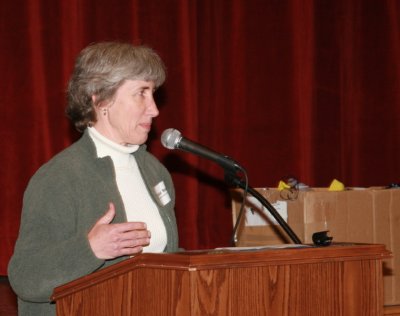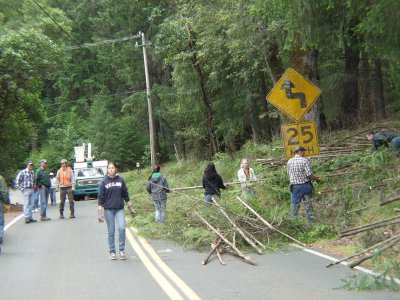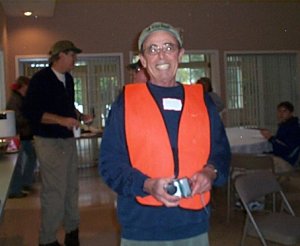- Lake County News Reports
- Posted On
State Water Board approves lake water quality plan
LAKE COUNTY – In an effort to put more “clear” into Clear Lake, the next step was taken recently to implement a monitoring plan that will improve water quality for the lake's beneficial uses.
On April 3, the State Water Board approved a resolution from the Central Valley Regional Water Quality Control Board (CVRWQCB) to amend the Water Quality Control Plan for the Sacramento River and San Joaquin River Basins – which receives water from Clear Lake by way of Cache Creek.
The Federal Clean Water Act requires the CVRWQCB to assign beneficial uses for Clear Lake, which include drinking water, agricultural irrigation, recreation, freshwater habitat, spawning, wilderness habitat and fishing (both commercial and sport).
Clear Lake has been listed as "impaired," meaning the water quality does not meet the standards for the beneficial uses due to nutrients flowing into the lake from tributaries. Those nutrients, in turn, cause algae to bloom at high levels.
With a goal of reducing nutrient flows into the lake by 40 percent, the CVRWQCB initiated a process to determine the total maximum daily load (TMDL) of pollutants and nutrients that Clear Lake can receive and still meet its beneficial uses.
Clear Lake is already undergoing a TMDL for mercury.
After being listed as impaired for nutrients and holding a meeting for stakeholders and the public in Lakeport in January 2006, the next step was to have the State Water Board adopt their proposed amendments to the plan, which they have now done.
The amendment still needs to be approved by the Office of Administrative Law and the US Environmental Protection Agency.
Once the amendment and TMDL are fully approved, responsible parties must submit a monitoring and control strategy within one year and comply with load and waste load allocations for phosphorus in Clear Lake within 10 years of approval.
The amendment states that the CVRWQCB will implement phosphorus control practices to achieve load and waste load allocations. They'll do that through waste discharge requirements or waivers of waste discharge requirements.
“Studies indicate that excess phosphorus contributes to the occurrence of nuisance blooms of blue-green algae in Clear Lake during summer and fall periods,” said Lori Webber, a CVRWQCB environmental scientist.
Certain species of algae emit toxins, Webber said in January 2006. “Those species are in the lake, but we don’t know if these species are emitting toxins.”
Many sources of phosphorus
According to the CVRWQCB, most of the excess phosphorus which enters the lake is bound to soil and sediment that comes from roads, agricultural activities (irrigation and fertilizer use), in-stream channel erosion, construction, gravel mining, wildfires and control burns, timber harvesting activities, livestock grazing, off-highway vehicles, dredging and filling, urban and storm water runoff, and sewage and septic overflows.
Most of the stakeholders agree that much has been done in the past several years to mitigate pollution and sediment flows to the lake. In fact, they may have already met the 40 percent reduction – but they won’t know until monitoring occurs. And monitoring is expensive.
“We have one year to develop a plan to monitor,” explained Bob Lossius, assistant director for Lake County Public Works.
“They’re forcing us to do the monitoring,” he said, but are not providing the funds to do so.
“For us,” Lossius said, “it’s a lot of time and a lot of money.”
Just to update the Clear Lake Basin Management Plan, Lossius said, will cost $500,000 and they’re currently doing expensive monitoring for mercury.
The amendment will require an assessment of the monitoring results five years and three months after full approval. That is meant to determine whether the phosphorus load and waste load allocations should continue to be required or if some other control strategy or approach is more appropriate. The TMDL's goals must be achieved within 10 years of implementation.
The CVRWQCB has listed “responsible parties” which will be required to do monitoring and then will be assigned a waste load allocation. They include Caltrans, Lake County Storm Water permittees (Lake County, City of Clearlake, City of Lakeport), the U.S. Bureau of Land Management, U.S. Forest Service and irrigated agriculture.
In January 2006, there was concern about where the $50,000 per year would come from for the stream monitoring gauges. Since then, the state is now paying for the operation of gauges on Middle, Scotts and Kelsey Creeks – but that’s only one part of the cost of implementing the TMDL.
The Irrigated Agricultural Lands Conditional Waiver for Irrigation and Stormwater Runoff program that is administered by the Lake County Farm Bureau has been monitoring for the past three years and reporting results to the CVRWQB.
The program requires growers to meet two conditions: They can join a watershed group approved by the CVRWQB or they can sign up with the CVRWQB as an individual.
Homes part of watershed
The Lake County Farm Bureau formed a watershed group for their voting members that includes all land where water would flow into the Sacramento Valley which was approved by the CVRWQB, according to Farm Bureau Executive Director Chuck March.
“We currently have approximately 168 growers with over 13,000 acres enrolled in our program in Lake County,” March said.
Much of this land is interspersed with residential properties that do not irrigate a commercial crop – but may irrigate lawns, gardens or have pastured animals. They would not participate in the waiver program to help pay for the monitoring, but would contribute to the results of any monitoring the program does.
Additionally, March explained that the watershed group has no regulatory power to enforce any practices on growers. “Our program is based upon monitoring and outreach with education,” March said.
It certainly wouldn’t have any enforcement power over lands that contribute to the watershed but aren’t a part of the program.
“We have been monitoring major tributaries for three years now,” March explained. The monitoring requires two toxicity tests, one test in the fall after tributaries begin to flow, and one test during the winter, based upon dormant oil applications, information that comes from pest control advisors and the agricultural commissioner.
A third monitoring event, March explained, is during the late spring before the tributaries go dry and the irrigation season begins.
They test for over 68 pesticides, heavy metals, turbidity and E. coli – with a price tag of more than $6,000 for each test.
“After three years of monitoring, we have shown no exceedances of any of the water quality objectives except for E. coli,” March said. They are currently sampling the E. coli for DNA that can help identify the source – which could include animals, birds or even septic tanks.
“The cost of this program exceeds $30,000, and our watershed membership is assessed to participate in our program,” March said. “Our growers are the only private industry responsible for monitoring the watershed. Currently we feel we are penalized because we irrigate land on a commercial basis.”
The Lake County Farm Bureau has discussed this issue with the Lake County Department of Water Resources, who agrees that it would be impossible to estimate loading from irrigated agricultural land alone – and it should fall under the reporting structure of Lake County.
Everyone agrees that they want to protect Clear Lake for beneficial uses – but where will Lake County and other “responsible parties” get the funds to do the monitoring and mitigation?
“It’s an unfunded mandate,” Lossius said. “With the programs we have in place, we may have already met the goals.”
Perhaps the question of where the funds for the monitoring will come from will be answered by the CVRWQCB when they host a stakeholders meeting on May 16 at the courthouse in Lakeport.
But probably not. Webber said at the last stakeholders meeting that the CVRWQCB didn’t have the funds either.
E-mail Terre Logsdon at This email address is being protected from spambots. You need JavaScript enabled to view it..
{mos_sb_discuss:2}

 How to resolve AdBlock issue?
How to resolve AdBlock issue? 












